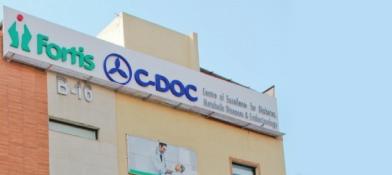Breast reduction surgery
Excessive breast size can be a heavy weight to carry. However, one does not have to endure the physical or emotional suffering it causes. Look for help with breast reduction surgery, also known as mammoplasty. This operation entails cutting the skin on your breasts to take out extra skin and breast tissue. It can also reduce areola, which is dark skin around nipples.
Various factors determine the method used for breast reduction, such as individual anatomy, composition of breasts, the extent of desired diminution, personal taste, and advice given by surgeons involved in your case.
Indications for Mammoplasty (Breast Reduction):
Physical discomfort and pain:
- Chronic back, neck, and shoulder pain
- Headaches
- Rashes beneath the breasts
- Deep bra-strap grooves
- Chronic breast pain
- Upper extremity neuropathy
- Postural changes
- Intertrigo, maceration, irritation, and other skin problems
- Difficulty in exercising
- Inability to find properly fitting clothes.
Psychological impact:
- Embarrassment and self-consciousness
- Improved self-esteem and body image
- Correction of asymmetry:
- Unilateral hyperplasia
- Unilateral breast reconstruction
Contraindications and considerations
- Patients with diabetes and hypertension should have control.
- Smoking is advised to quit as it impairs wound healing and increases the risk of flap necrosis.
- Individuals over 40 years should undergo a mammogram, especially those with a family history of breast cancer.
- A surgical oncologist should be consulted before doing an elective breast reduction if any questionable abnormalities are discovered.
Procedure:
Breast reduction surgery is an outpatient surgery typically performed using local anesthetic with IV sedation or general anesthetic. The incisions are made by the surgeon around the areola along the lower part of the breast. This is followed by removal of extra breast tissue, skin, and fat to form a smaller, more proportionate breast size. The duration of surgery can last between 2 to 5 hours or more. Using surgical tape and sutures the incisions will be closed.
Your surgeon will choose one of surgical method depending on the size and shape of the breasts, the amount of tissue content to be removed, and your desired outcome:
Liposuction
Liposuction might be used for smaller reductions. The surgeon makes small incisions in the outer skin surface and inserts a vacuum attached thin tube, which removes fat and fluids from the breast. This method usually results in less scarring and is ideal for those whose skin has good elasticity.
Vertical or Lollipop Technique
The surgeon uses a vertical technique to address visible sagging and is used in case of moderate breast reductions. The procedure involves a circular incision around the nipple area and a vertical incision from the downside of the nipple to the breast crease. Extra tissue and fat are then removed, and the breast is reshaped and lifted. The resulting scar resembles a lollipop.
Mastopexy or Breast lift surgery
Breast lift surgery is performed in addition to breast reduction to transpose the nipples and enhance the breast's shape. This might involve the same incisions as the reduction or smaller incisions above the nipple. It is important to note that this is different from breast augmentation, which involves implants to increase breast size.
Inverted T or Anchor Technique
Also known as a Wise pattern or anchor incision, this method is optimal for large breast reductions and significant sagging or asymmetry. The surgeon makes incisions around the edge of the areola, vertically bottom to the breast crease, and horizontally along the breast crease. This allows for the removal of a substantial amount of tissue and reshaping of the breast.
Postoperative procedure
Post surgery, you will receive specific instructions on how to care for your breasts to ensure proper healing and achieve the best possible outcomes. After closing the incisions with sutures and bandage the breasts the drainage tubes are placed to remove excess fluid from the surgical site, typically remaining in place for a few days before being removed by the surgeon.
Immediately after surgery the breasts will be bandaged, and a surgical bra will be covered to hold them in place.
To drain extra blood or fluid a tube will be placed under each arm.
The doctor may prescribe medicine for pain and medicine to decrease the risk of infection.
Expectations on the first days or week after surgery:
- Breasts will probably feel tender. This will usually be temporarily and relieve over time.
- The Breasts may look swollen and bruised.
- Individuals will be advised to wear a surgical bra that closes in front to support their breasts.
After a few weeks, here are common instructions:
- Physical activity should be limited for 4 to 6 weeks during the healing process.
- An approved surgical bra should be used to allow the breasts to heal and reduce swelling.
- Over time the scares will fade. It is important to follow-up visit with surgeon to check the recovery status.
- It's important to follow your surgeon's instructions carefully during the recovery period.
- If you have any concerns about your recovery, please contact your surgeon.
Results of breast reduction surgery
Breast reduction surgery is said to be successful when one gets relief from pain in the upper back, shoulders, and neck.
Post-surgery, one might gain the confidence to participate in various physical activities and increase one's overall wellness.
Results may take months for the swelling to go down completely and the surgical scars to fade.
The result generally lasts a long time. However, aging, changes in weight, pregnancy, and other factors can change breast shape and size.
Breast Reduction for Men:
Breast reduction surgery can also be carried out on men who have enlarged breasts. This condition is known as gynecomastia, which makes men embarrassed and self-conscious with or without a shirt. Breast reduction surgery can help men:
- To have a masculine, form chest.
- To have confidence about their appearance when wearing thin, fitted shirts.
Conclusion
A breast reduction surgery can alter a person’s life, especially if the patient is a woman who has been physically affected and emotionally stressed due to having abnormally very large and heavy breasts. Nevertheless, before a conclusion is made, possible merits and demerits should be discussed.
Despite the different approaches for conducting this operation, there are risks associated with each technique. The risks need to be well understood by the patient themselves, hence, it is important to discuss them thoroughly with their surgeon.
In the present era many advanced techniques have been progressed. Among them liposuction or using mesh support are known to result in faster recovery with smaller scares. However, Patients should carefully consider their individual needs, goals, and risk tolerance before deciding.
Popular Searches :
Hospitals: Cancer Hospital in Delhi | Best Heart Hospital in Delhi | Hospital in Amritsar | Hospital in Ludhiana | Hospitals in Mohali | Hospital in Faridabad | Hospitals in Gurgaon | Best Hospital in Jaipur | Hospitals in Greater Noida | Hospitals in Noida | Best Kidney Hospital in Kolkata | Best Hospital in Kolkata | Hospitals in Rajajinagar Bangalore | Hospitals in Richmond Road Bangalore | Hospitals in Nagarbhavi Bangalore | Hospital in Kalyan West | Hospitals in Mulund | Best Hospital in India | | Cardiology Hospital in India | Best Cancer Hospital in India | Best Cardiology Hospital in India | Best Oncology Hospital In India | Best Cancer Hospital in Delhi | Best Liver Transplant Hospital in India
Doctors: Dr. Rana Patir | Dr. Rajesh Benny | Dr. Rahul Bhargava | Dr. Jayant Arora | Dr. Anoop Misra | Dr. Manu Tiwari | Dr. Praveer Agarwal | Dr. Arup Ratan Dutta | Dr. Meenakshi Ahuja | Dr. Anoop Jhurani | Dr. Shivaji Basu | Dr. Subhash Jangid | Dr. Atul Mathur | Dr. Gurinder Bedi | Dr. Monika Wadhawan | Dr. Debasis Datta | Dr. Shrinivas Narayan | Dr. Praveen Gupta | Dr. Nitin Jha | Dr. Raghu Nagaraj | Dr. Ashok Seth | Dr. Sandeep Vaishya | Dr. Atul Mishra | Dr. Z S Meharwal | Dr. Ajay Bhalla | Dr. Atul Kumar Mittal | Dr. Arvind Kumar Khurana | Dr. Narayan Hulse | Dr. Samir Parikh | Dr. Amit Javed | Dr. Narayan Banerjee | Dr. Bimlesh Dhar Pandey | Dr. Arghya Chattopadhyay | Dr. G.R. Vijay Kumar | Dr Ashok Gupta | Dr. Gourdas Choudhuri | Dr. Sushrut Singh | Dr. N.C. Krishnamani | Dr. Atampreet Singh | Dr. Vivek Jawali | Dr. Sanjeev Gulati | Dr. Amite Pankaj Aggarwal | Dr. Ajay Kaul | Dr. Sunita Varma | Dr. Manoj Kumar Goel | Dr. R Muralidharan | Dr. Sushmita Roychowdhury | Dr. T.S. MAHANT | Dr. UDIPTA RAY | Dr. Aparna Jaswal | Dr. Ravul Jindal | Dr. Savyasachi Saxena | Dr. Ajay Kumar Kriplani | Dr. Nitesh Rohatgi | Dr. Anupam Jindal
Specialties: Heart Lung Transplant | Orthopedic | Cardiology Interventional | Obstetrics & Gynaecology | Onco Radiation | Neurosurgery | Interventional Cardiology | Gastroenterologist in Jaipur | Neuro Physician | Gynecologist in Kolkata | Best Neurologist in India | Liver Transfer | Best Cardiologist in Delhi



























